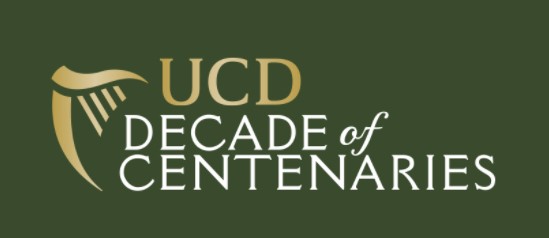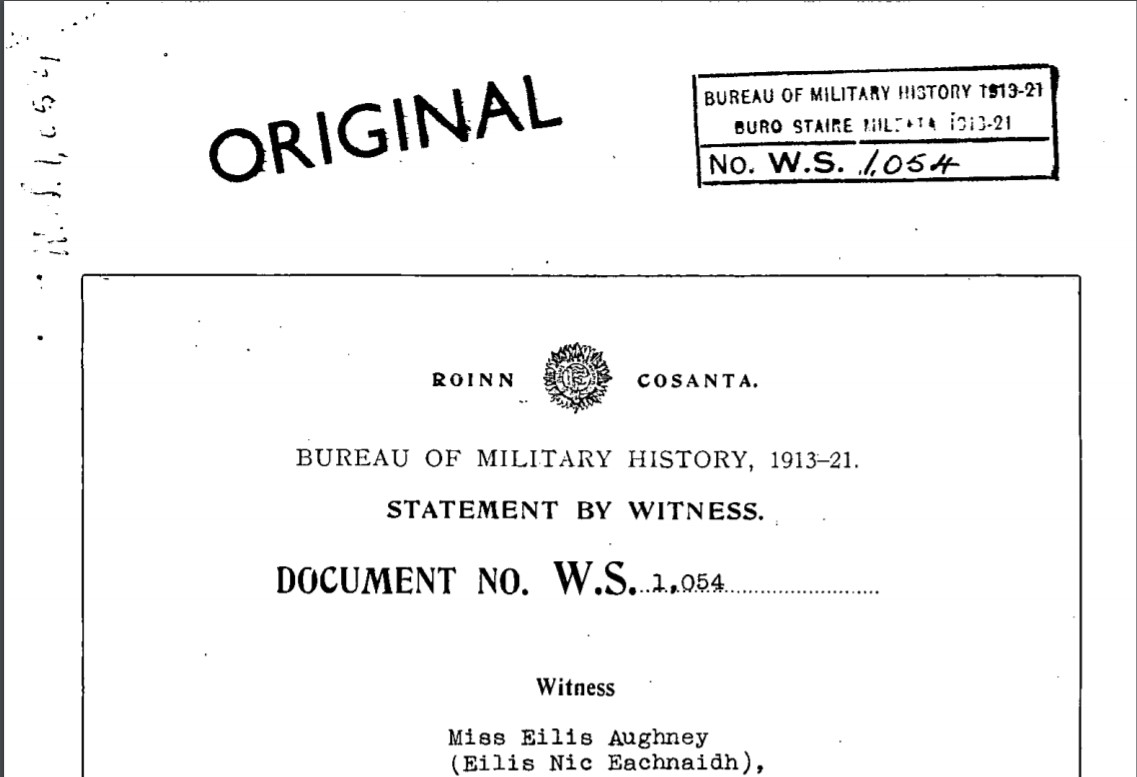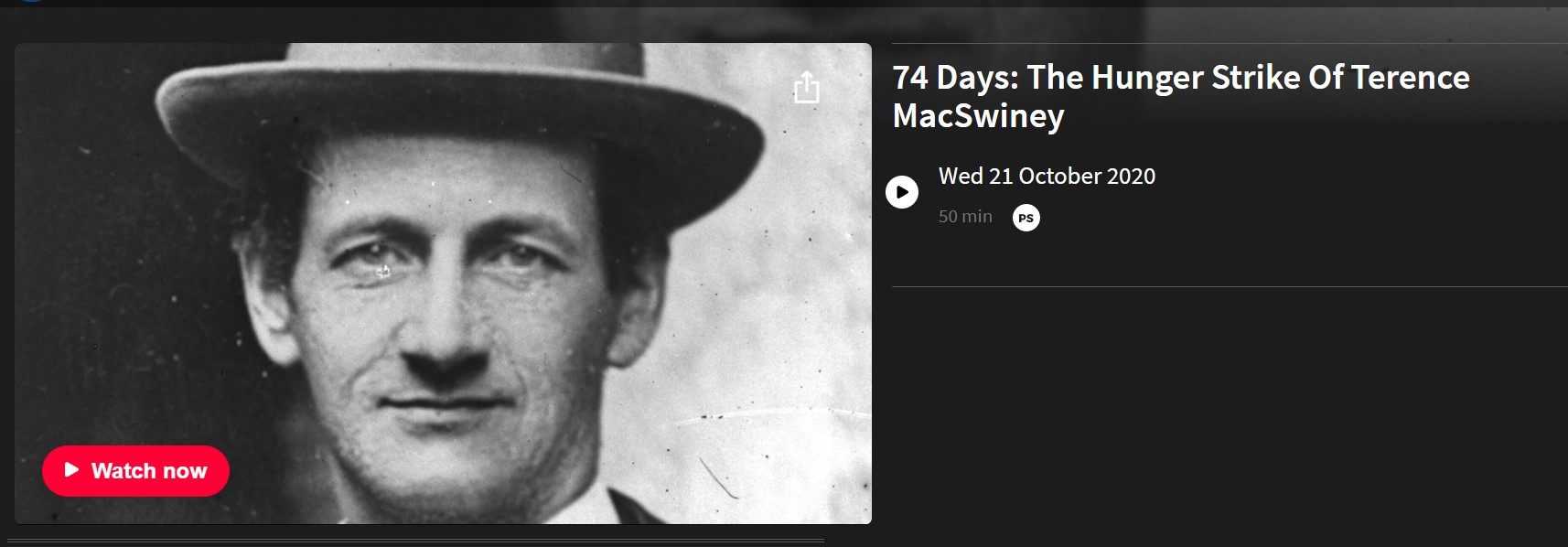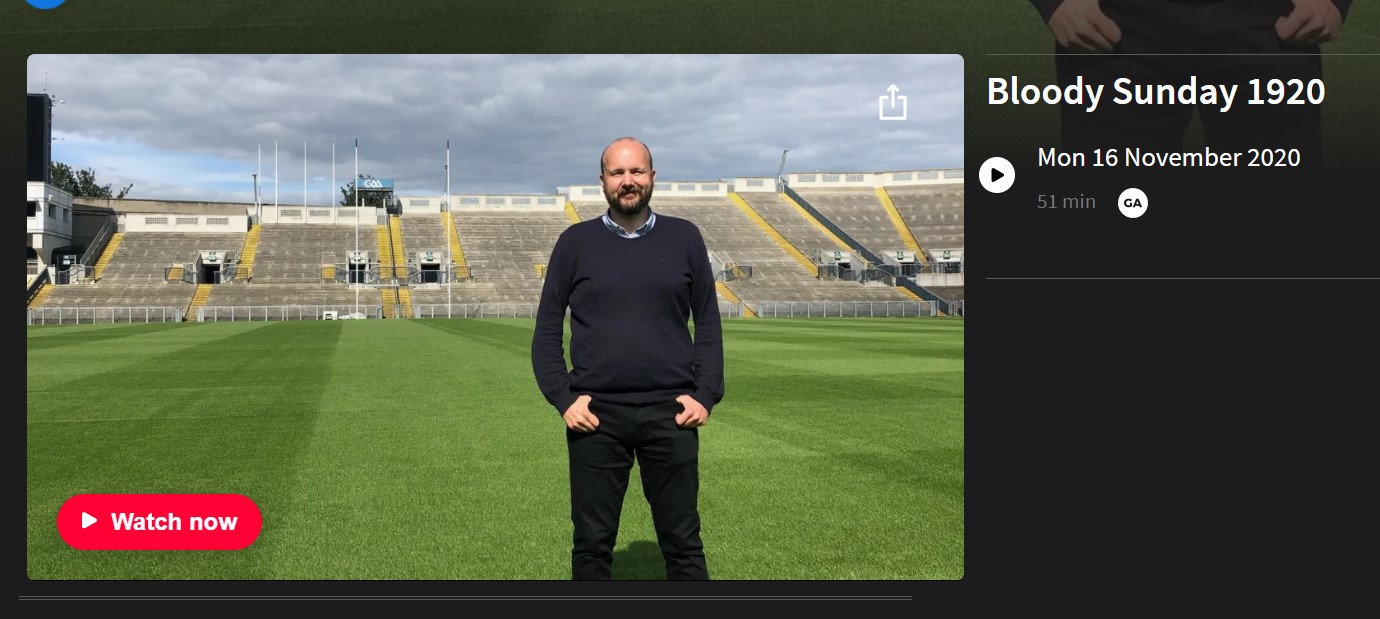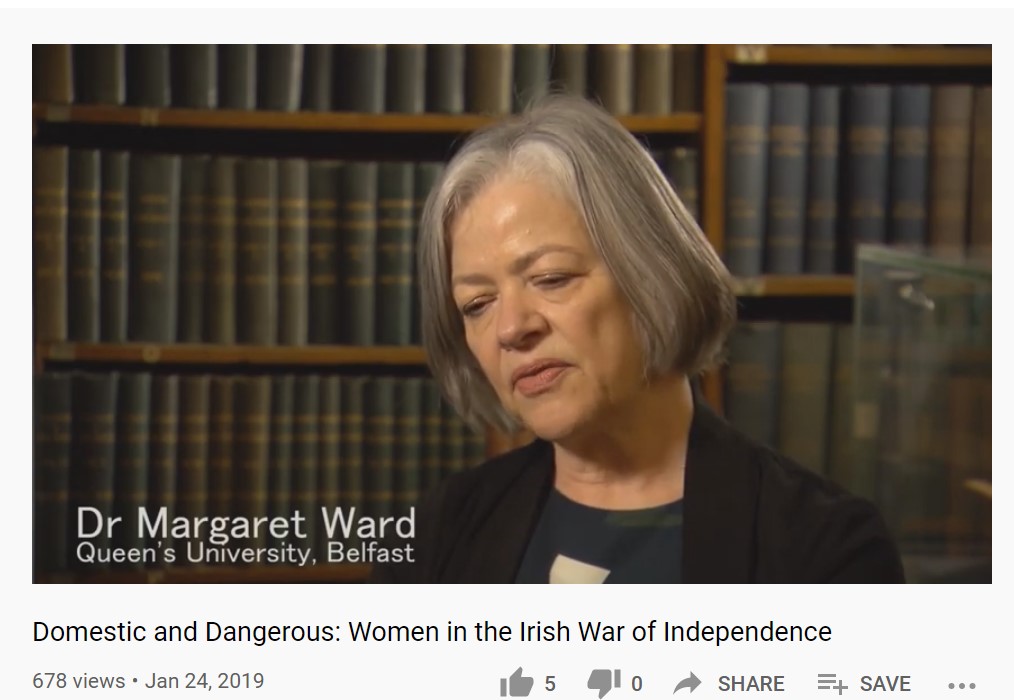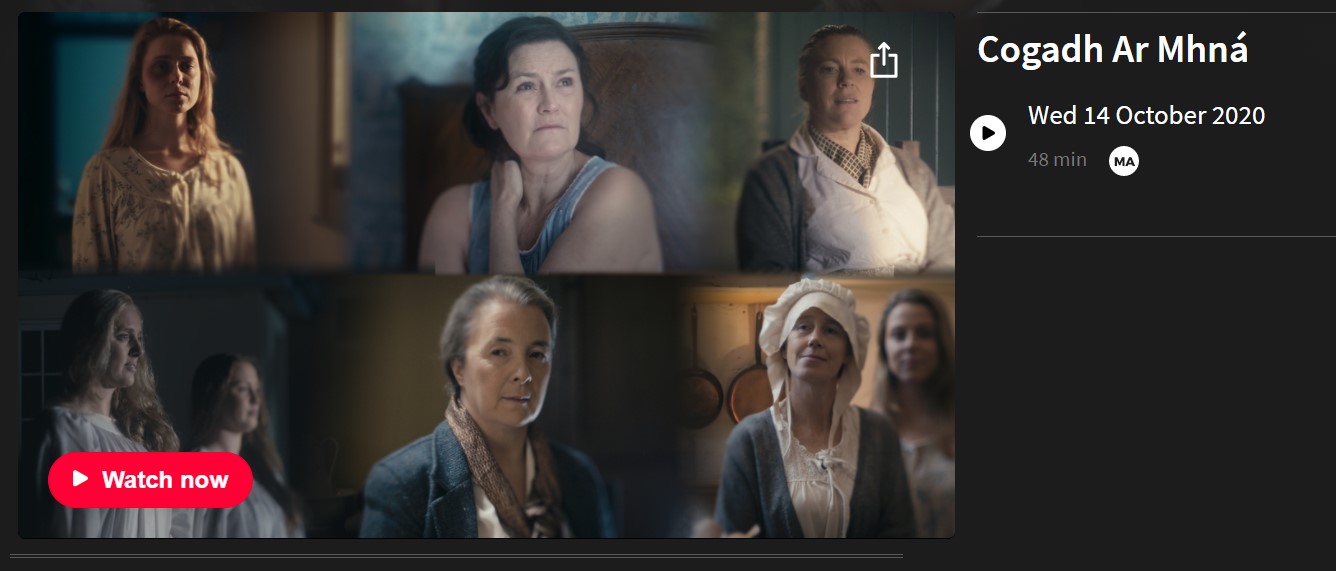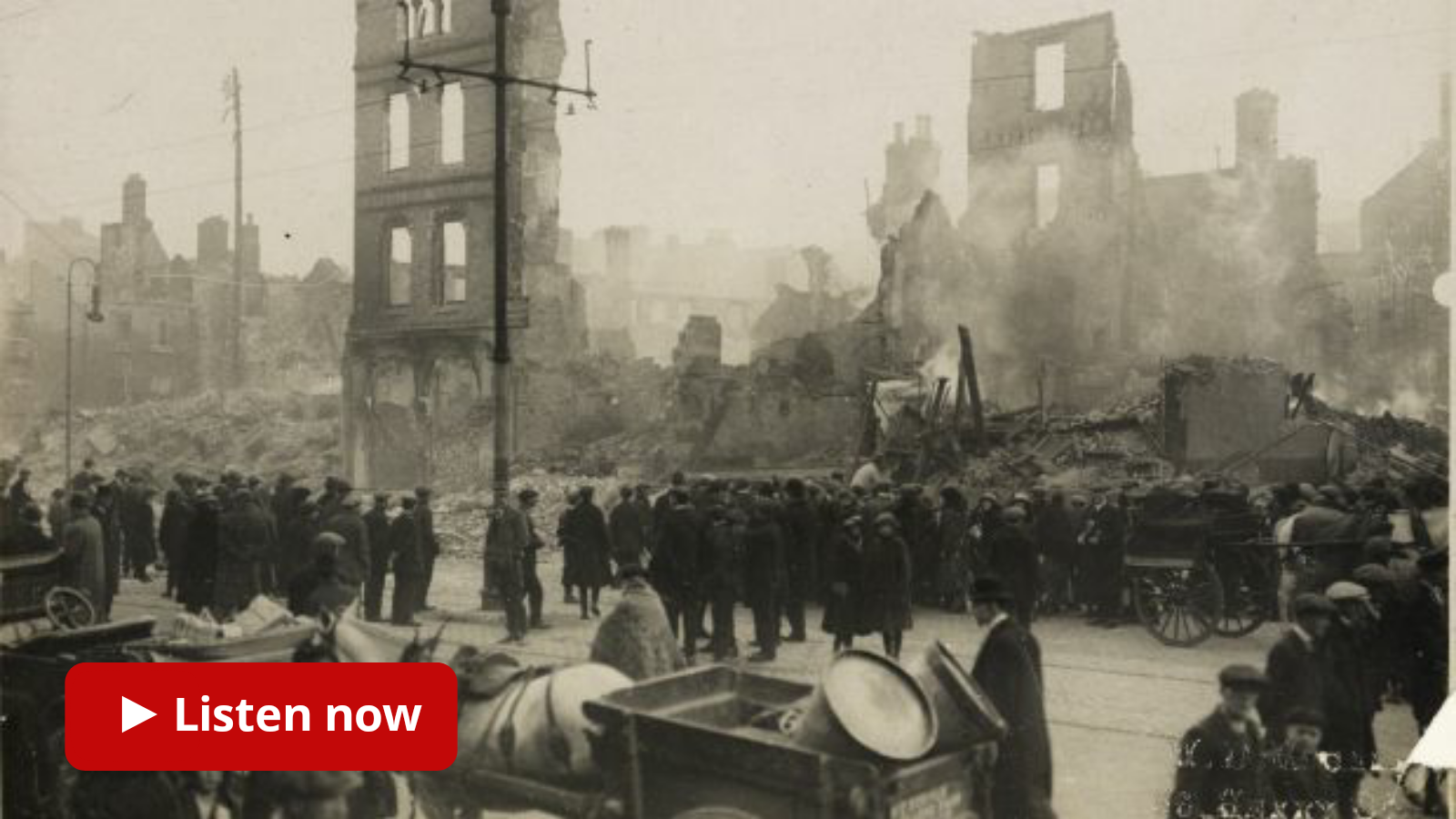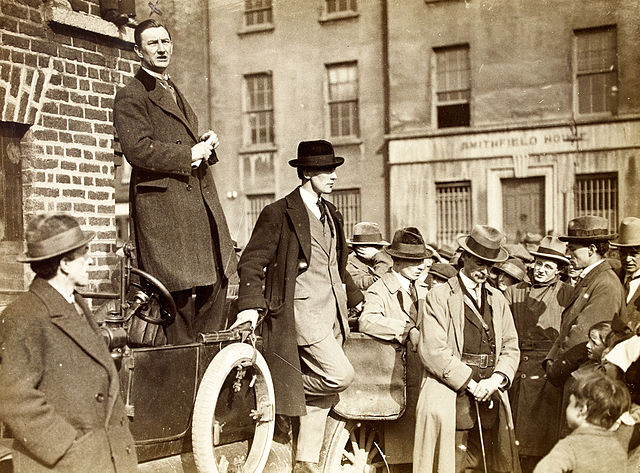READ:
1. Timeline
Click on the link below to read through the timeline from the University College Dublin – Decade of Centenaries Website. Look closely at the years 1919,1920 and 1921 to read about events that happened during the War of Independence.
READ:
2. Role of Women
Read below about the role of women in the War of Independence as told by three women in their Witness Statements from the Bureau of Military History. The witness statements were collected by the State between 1947 and 1957, in order to gather primary source material for the revolutionary period in Ireland from 1913 to 1921.
Full versions of these statements and others can be searched on the website. Click on the link below to see the full list of witness statements – https://www.militaryarchives.ie/collections/online-collections/bureau-of-military-history-1913-1921/witnesses/
Witness Statement 1: Miss Eilis Aughney
It was about 1919, when I was doing my secondary teacher’s diploma, that I became a member of University Branch of Cumann na mBan, being persuaded to this step by my professor, Miss Boden, who afterwards became a Dominican nun..
We had branch meetings every Sunday morning at 25 Parnell Square. We did indoor drill and were taught first aid by Dr. Dorothy Price and some medical students of the branch. Like all the other branches we paraded at funerals and such functions…
I remember once being mobilised with a few others in that year at Scoil Bhride for First Aid work on the occasion of a city ambush, but actually no casualties were brought in.
We used stick small posters up on all sorts of places such as lamp posts, gates and doors showing the activities of the Dublin Brigade. This was by way of propaganda for the Dublin Brigade.
I remember doing a house to house distribution of printed propaganda with Kathleen McGilligan in Grand Canal Street. We used to put the literature through the letter boxes or, if the doors were open hand it to the people of the house.
During the long summer holidays my sister Honoria and myself were asked by the Director of Organisation Leslie Price I think, to organise a branch of Cumann na mBan in our own town, Tullow….Either in 1920 or 1921 there was an attack on the local police barracks for arms when one of the Vounteers was wounded and brought to the house of my cousin, Eilis Dargan, and there attended by Honoria. We supplied first aid outfits to the local Volunteers all through the war.
Witness Statement 2: Nora Aghas
…I took messages to the Dalys of Limerick from Dublin. I had a narrow escape from arrest one day when the train was held up at the Boher or some place and a woman searcher was among the raiding party. By good luck the raiders were busy examining the Pay Order belonging to some teacher on the platform and when they resumed the search of the carriages, mine which was the next was overlooked and they passed on next door. I saw a girl who had been in my carriage and had moved out of it being carried off in the lorry by the Black and Tans. I had found out that she too was carrying a despatch…..
Witness Statement 3: Miss Annie Barrett
…I entered the Post Office Service as a telephonist at Killarney in 1906. After about six months I was transferred to Mallow. Early in 1919 I was appointed Supervising Telephonist at Mallow and I continued to serve in this capacity until I was superannuated in 1945.
..Having contacted the Volunteers in my home area, arrangements were made for me to meet Dan Hegarty and Owen Harold of Mallow. I arranged with the latter to relay all military and police messages passing through Mallow during my spells of duty to the Mallow Intelligence Section of the Irish Volunteers. At this time I made copies of all such messaged and handed them in to the house of Bill Hayes, who was a railway porter. He usually handed the messages to Jack Barrett (no relation) who was Communications Officer….
In May, 1919 I obtained particulars of a telephone message from Dublin to the British Forces at Fermoy informing them that some men who had been wounded in the rescue of Sean Hogan at Knocklong, were being accommodated in a house in the Mitchelstown area. Instructions were issued to raid this house. I immediately passed this information by means of telegraph messenger to the local Intelligence Officer who relayed it to Battallion and Brigade Headquarters. The wounded men were removed before the British raided the house in Mitchelstown district…
I was never, at any time, as far as I can recollect under suspicion by the British Forces. While not showing myself as too sympathetic towards them I always managed to maintain friendly relations with them, otherwise I do not think I could have been so successful in my activities as Intelligence Agent for the I.R.A while a servant of the Post-Master General.
 READ:
READ:
3. The Sack of Balbriggan
Read about the Sack of Balbriggan from a shortened version of an article written in the Fingal Independent in 2003. Click on the link here to read the full article. https://www.independent.ie/regionals/fingalindependent/news/the-sack-of-balbriggan-to-be-commemorated-27776467.html
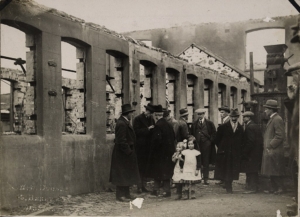 The rampage by the notorious ‘Black and Tans’ on the night of Monday, September 20 was in reprisal for the deaths of District Inspector Burke RIC and his brother Sergeant Burke who were shot dead while in Smyth’s pub, Balbriggan earlier that day.
The rampage by the notorious ‘Black and Tans’ on the night of Monday, September 20 was in reprisal for the deaths of District Inspector Burke RIC and his brother Sergeant Burke who were shot dead while in Smyth’s pub, Balbriggan earlier that day.
The sack began around 11pm as lorries loaded with Black and Tans arrived in the town from the barracks at Gormanston and directly proceeded to shoot, burn and loot the town in a systematic spree of horrific violence.
In Clonard Street, 20 houses were destroyed leaving helpless and terrified inhabitants to flee into the fields surrounding the town.
Several pubs were looted and burned including Derham’s Pub and McGowan’s pub on George’s Hill.
Local businesses were also targeted with Deeds and Templar Hosiers, an English-funded company, completely destroyed.
This factory had employed 130 workers and an additional 180 who did work for it from home, according to Pat O’Neill who compiled a factual account on the Burning of Balbriggan.
There was only one house targeted on Hampton Street and it was that of John Gibbons, who was taken for questioning concerning the shootings earlier that day.
Also at the barracks was the town’s barber James Lawless, both men protesting their innocence.
They were later taken to Quay Street where they were beaten to death, their bodies found the next morning as the smoke from the burned out town still rose in an eerie silence.
A terrified population sought refuge wherever they could, many going to Dublin to stay with relatives as news of the carnage spread throughout the land.
Others with nowhere to go or those who did not want to leave slept in makeshift straw homes in the fields around the town.
On Thursday morning, a local businessman, Mr Gallen, paid for families with no homes to travel to distant relatives.
A subsequent inquiry put the blame firmly at the doorstep of the British forces and awarded compensation to the families of Lawless and Gibbons of £1,750 each, which was to be paid by the ratepayer.
Also levied to the county was damages totalling over £80,000 with costs for Deeds and Templar which an inquiry heard had left 200 unemployed and would take two-and-a-half years to rebuild.
Numerous other claims were settled for destroyed businesses, homes and damages to other property incurred over the night of Monday, September 20.
 WATCH:
WATCH:
4. The Death of Terence McSwiney
Watch this RTE documentary explaining the events surrounding the death of Terence McSwiney and the impact it had on the war.
https://www.rte.ie/player/movie/74-days-the-hunger-strike-of-terence-macswiney-e1/159577128177
 WATCH:
WATCH:
5. Bloody Sunday
Watch this RTE documentary explaining the events of Bloody Sunday 1920 and the impact it had on the war.
https://www.rte.ie/player/movie/bloody-sunday-1920-s1-e1/162915880185
 WATCH:
WATCH:
7. Violence against women
Watch this RTE Documentary explaining how violence against women played a role in the War of Independence.
https://www.rte.ie/player/movie/cogadh-ar-mhn%C3%A1-s1-e1/153711656383
 LISTEN:
LISTEN:
9. Oscar Traynor
Click on the link below to listen to the voice of Oscar Traynor from the Military Archives website, as he tells his story of The War of Independence. This recording was made in 1950/51. Oscar Traynor’s recording is the third recording down. Click on the black triangle to start listening.
Think and Write:
Question 1: What were the key events of the War of Independence? Try to draw your own timeline.
Question 2: What impact did the death of Terence MacSwiney have on the war?

Question 3: What impact did Bloody Sunday have on the war?
Question 4: What impact did the Burning of Cork have on the war?
Question 5: What impact did the Sack of Balbriggan have on the war?
Question 6: What different roles did women play during the war?


